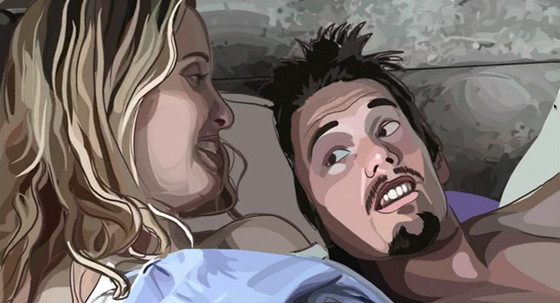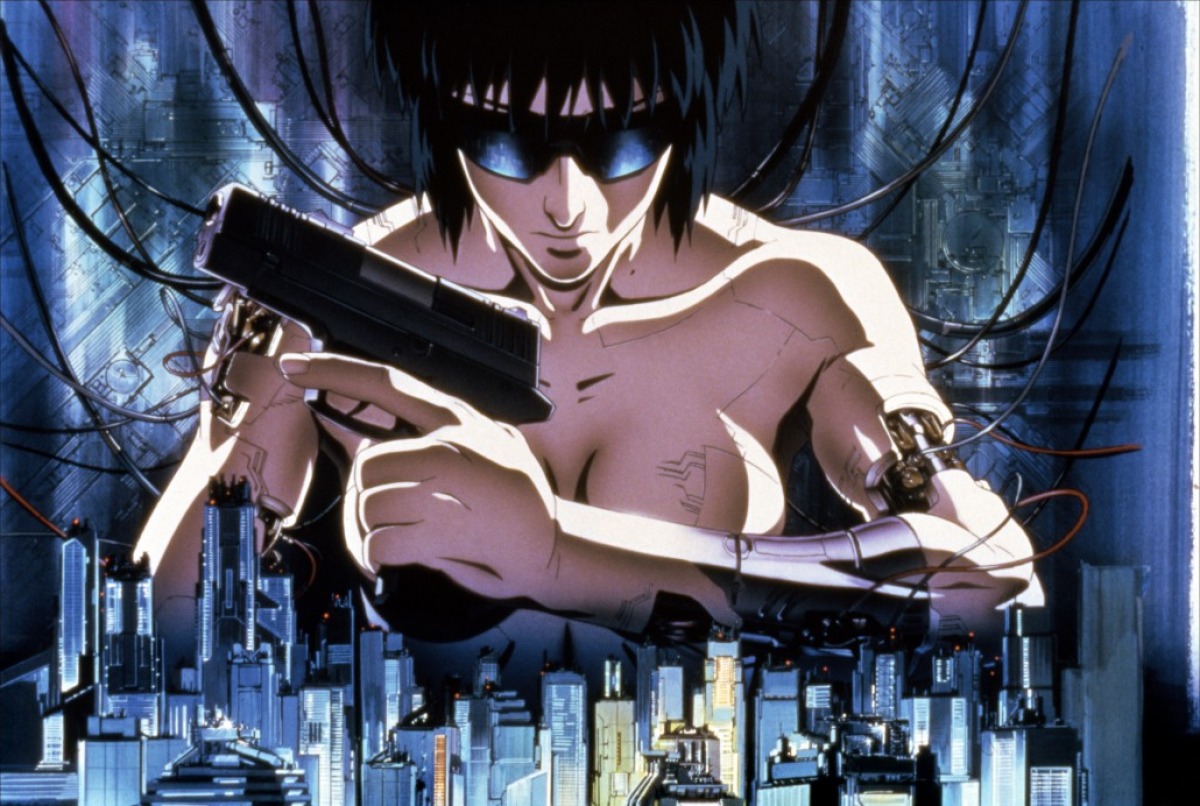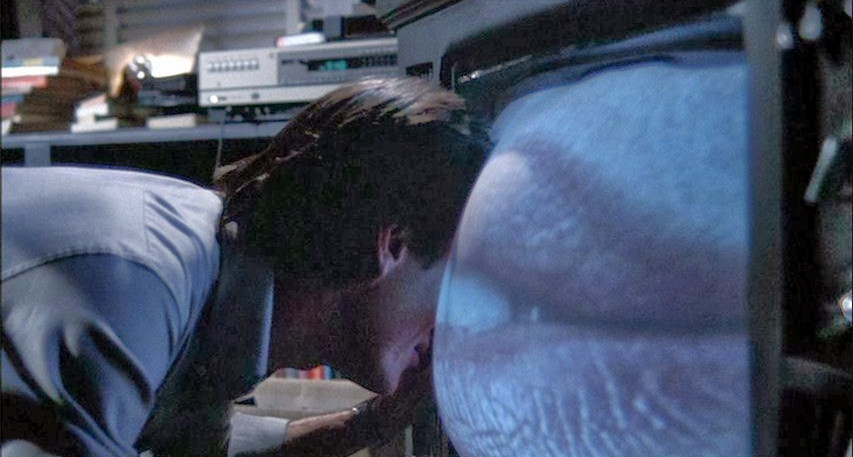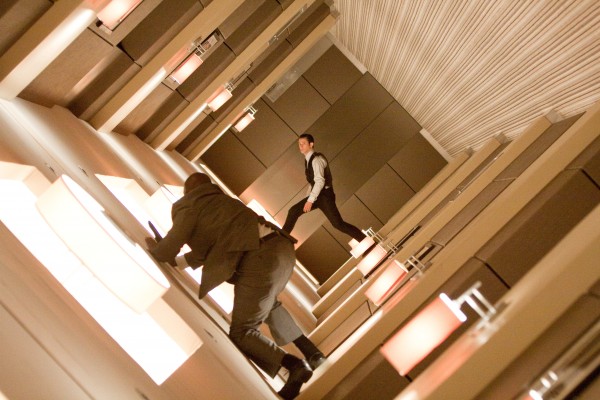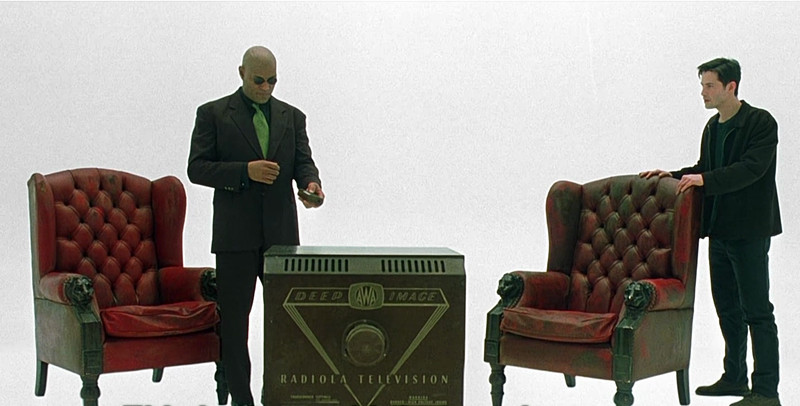6. Waking Life (2001)
Plot: After a series of false awakenings from dreams, a young man wonders whether he will ever return to his waking life. He travels through the dream world and interacts with an array of characters and events, having conversations that focus on philosophical questions about the meaning and goal of life.
Virtual Reality: The virtual reality in the film appears as the dreams of the protagonist, which contain characters and ideas, however, which do not seem familiar to him.
Highlights: Waking Life is made vibrant and visually stunning by the rotoscoping cinematography technique it uses, which uses animation over live film footage, as also used in Richard Linklater’s film A Scanner Darkly (2006). The mostly conversation-based plot is kept interesting by imagery that depicts the words and ideas the characters discuss.
5. Tron (1989)
Plot: A software engineer and videogame fan embarks on a journey into the virtual world created by his company. Following the trail of a mysterious series of events, he enters a competition that will take all his videogame skills to overcome.
Virtual Reality: The Grid, a software company’s mainframe cyberspace, which users hack into with computers.
Highlights: The neon-lighted, grid-like virtual reality were an interesting display of special effects for the time of the film’s release, and the action scenes, including vehicle races and combat, still have an aesthetic appeal today.
Although the plot has been called confusing by some reviews, the film is overall an interesting concept that stands the test of time, and is made entertaining by Jeff Bridge’s portrayal as a main character. Bridges and some of the other team members associated with Tron later reprised their roles for the sequel Tron: Legacy (2010).
4. Ghost in the Shell (1995)
Plot: Set far in distant future, Ghost in the Shell is a story about the integration of artificial intelligence into human society, and the blurred line between human and machine consciousness. In this respect, it follows in the footsteps of earlier popular works like Blade Runner (1982) or the original Isaac Asimov I, Robot stories (1950).
Most of the characters inhabit bodies that are at least partially artificial, raising questions about whether their self-identity is still human. The plot follows two agents on an assault team as they attempt to find a hacker who has been behind a series of crimes in their city. The hacker mastermind has gained the ability to hack into and control minds of others, making him difficult to find or predict.
Virtual Reality: Virtual reality in the film relates to the way human intelligence blurs with artificial intelligence. Individuals have the choice of choosing new, potentially indestructible artificial bodies, as well as wiping or changing their memories of the past. This grants them the ability to live a different life in a different world.
Highlights: Ghost in the Shell, like The Matrix (which it was later to influence), is a masterpiece of a film that excels in every area, from dialogue and concept, to action and visual effects. Originally based on a manga novelization, the film has since led to an even larger franchise of films, TV shows, and manga.
3. Videodrome (1983)
Plot: Things go from strange to horrific after the CEO of a television station picks up a new station and decides to broadcast it. The mysterious station shows sensational scenes of torture and execution, which the main character originally assumes are staged. Soon, however, the horrific reality of the station begins invading the real world of his life, causing mutations and menacing visions.
Virtual Reality: The virtual reality in the film emanates from the mysterious TV station and everything involved with its origination.
Highlights: Videodrome keeps the attention of audiences glued to the screen as the bizarre and horrific events in the film unfold over time. It is a great example of a science fiction horror film that uses the concept of virtual reality.
2. Inception (2010)
Plot: A group of hackers use military technology to gather information from the subconscious dreams of their targets. A detailed series of events leads the protagonist, played by Leonardo DiCaprio, on a mission that involves “inception,” or the implanting of information into a dream. If successful, he is given the opportunity to have details of his criminal past removed. The stakes become high, however, when battles for control erupt in the shared dream-space.
Virtual Reality: The subconscious world of targets’ dreams, and shared dreamworlds of the dream-infiltrating agents. In the film, the hackers also use technology that allows them to introduce artificially constructed elements into the dreams.
Highlights: Inception is a non-stop thrill ride, and takes action and espionage movies to new territory by introducing plot twists that would be impossible in other places. Along the way, it also asks some interesting questions about life and dreams.
1. The Matrix (1999)
Plot: A detached computer hacker played by Keanu Reeves lives in a world of isolation and monotony until he stumbles upon cryptic details about “the matrix” on the Internet, and decides to risk his job to learn what it is. Events accelerate when men in agent uniforms begin monitoring him, and rebels that come to his rescue ask if he would like to know what the matrix really is.
Virtual Reality: The matrix is a realistic and fully immersive simulation of the world, set in a city that could resemble present day New York.
Highlights: The Matrix stands out among virtual reality films as one of the most memorable successes as both a mainstream and cult classic film, popularizing the genre in a new way. It successfully combines the action and adventure spirit of science fiction films like The Terminator (1984), with the culture of comics, manga, and videogames as in Ghost in the Shell (1995) and Frank Miller’s Ronin (1983).
The Matrix is also appealing for its use of the Plato’s Cave metaphor and its other influences from philosophy, which includes Jean Baudrillard’s post-modernist book Simulacra and Simulation (1981). The Wachowskis followed the Matrix with two sequels, The Matrix: Reloaded (2003) and The Matrix: Revolutions (2003), which were also successful, although the first has remained the most popular.
